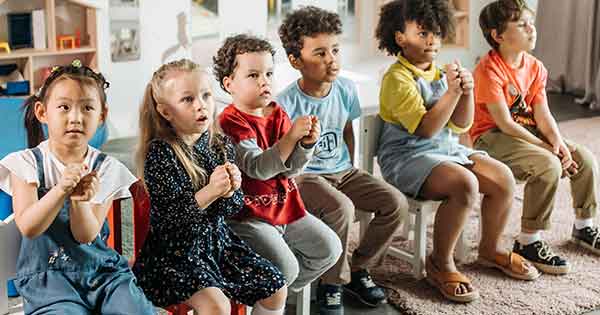This week we’ve been introducing Dare to Care Bear, a brand-new Care Bear whose number one goal is acceptance of others. This compassionate bear knows that we’re all different in some ways, but he also knows that we’re the same in other respects. So, as part of the Care Bears takeover week, we’re taking inspiration from Dare to Care Bear, with some top tips to teach kids to be inclusive and to embrace diversity.
Why is it important to teach kids specifically about diversity, acceptance and inclusivity?
We live in a world that’s a rich tapestry of history, culture and diversity. So, teaching kids about diversity is an important step to helping them navigate the world, with kindness.
In fact, compassion, acceptance, kindness and the ability to embrace and value diversity are things we should all practise. After all, it’s important that we all feel comfortable in our own skin, whilst appreciating that not everyone looks, talks, or thinks in the same way. This is key to promoting self-worth, a sense of belonging, and respect for everyone!
Top tips to teach inclusivity and acceptance
1. Model inclusive behaviour
Children will learn through the behaviour of their parents and peers, so be sure to reflect on your personal beliefs and behaviours and ensure you’re promoting the same values you’d like your child to have. And when you’re talking about people from all backgrounds, try to avoid reinforcing stereotypes. If you treat all people with kindness and respect, your child will learn to do the same.
2. Be prepared to answer questions… Lots of questions!
When discussing differences, be sure to talk openly and don’t try to avoid answering your child’s questions. Ask them why they’d like to know and provide honest, age-appropriate answers. Of course, if you don’t know the answer, tell them that you need some time to think about it and let them know you’ll answer it once you’ve had that time.
3. Build your child’s self-esteem
As your child grows, offer them opportunities to feel capable and competent to build their confidence.
4. Help your child learn to empathise
Empathy is the ability to notice the feelings of others and imagine what it feels like to be in their position – it is also the ability to see things from other peoples’ perspectives. It is a skill that can be taught!
5. Expose your child to diversity
Exposure to diverse experiences and groups of people helps to normalise differences. Ways that you can do this include visiting museums and other cultural places, attending cultural events, spending time with people from diverse backgrounds, travelling to new places, watching and reading content that celebrates diversity, helping your child find a pen pal from overseas, and purchasing toys that promote diversity.
6. Highlight similarities
When we’re teaching children about diversity, it’s also key to highlight where there are similarities or shared experience. For instance, we all share the experience of being human. And forming a connection with others is part of being human. That could be something as simple as shared interests – a love of the same foods, sports, etc.
Head back to the main Care Bears takeover page to continue the fun.
Source: Mixed sources to include Big Life Journal and Very Well Family.







A good start for kids, introducing the reality of life.
Definitely! It’s never too early to teach kids to be kind – but also to value their own self worth